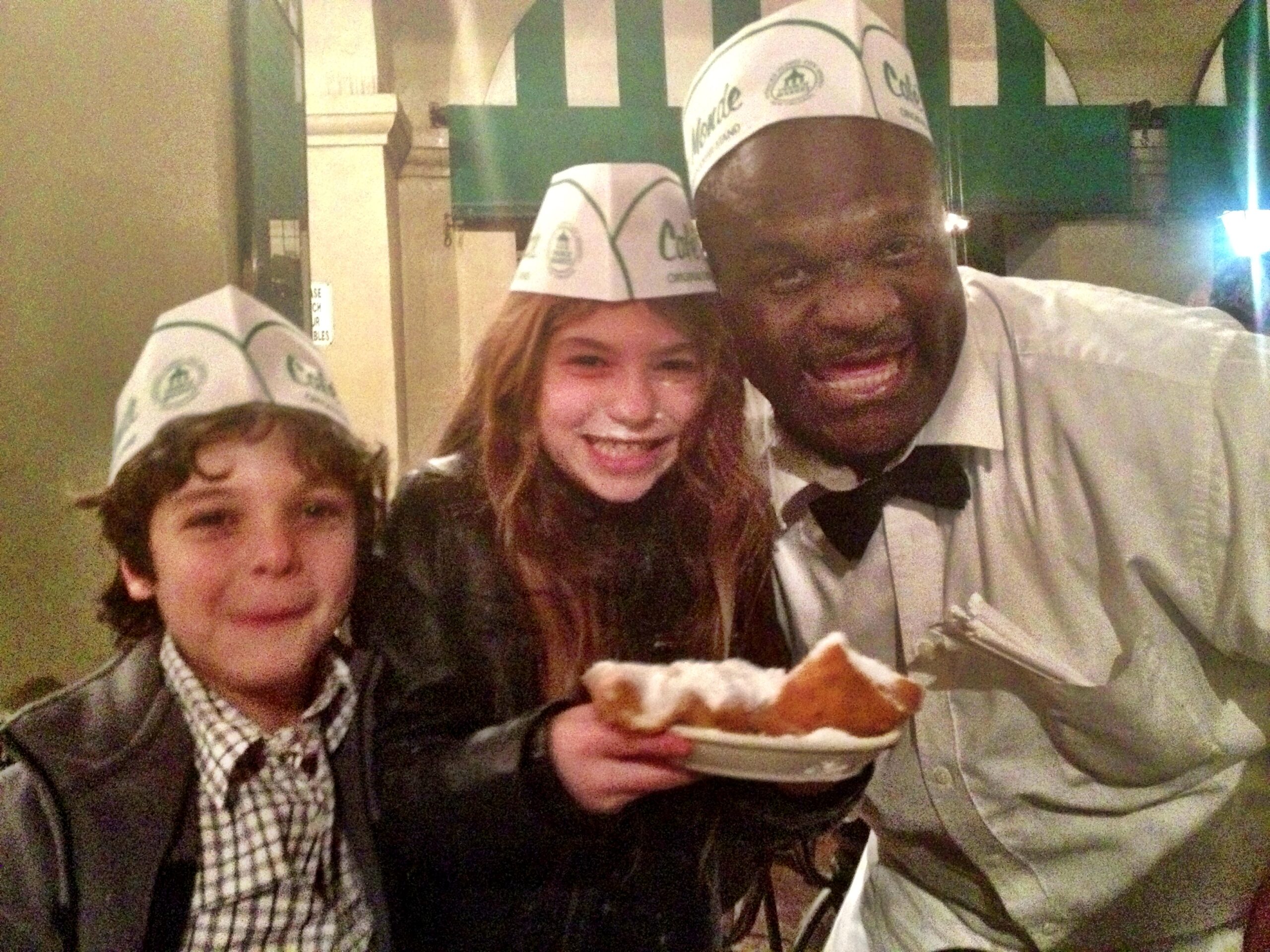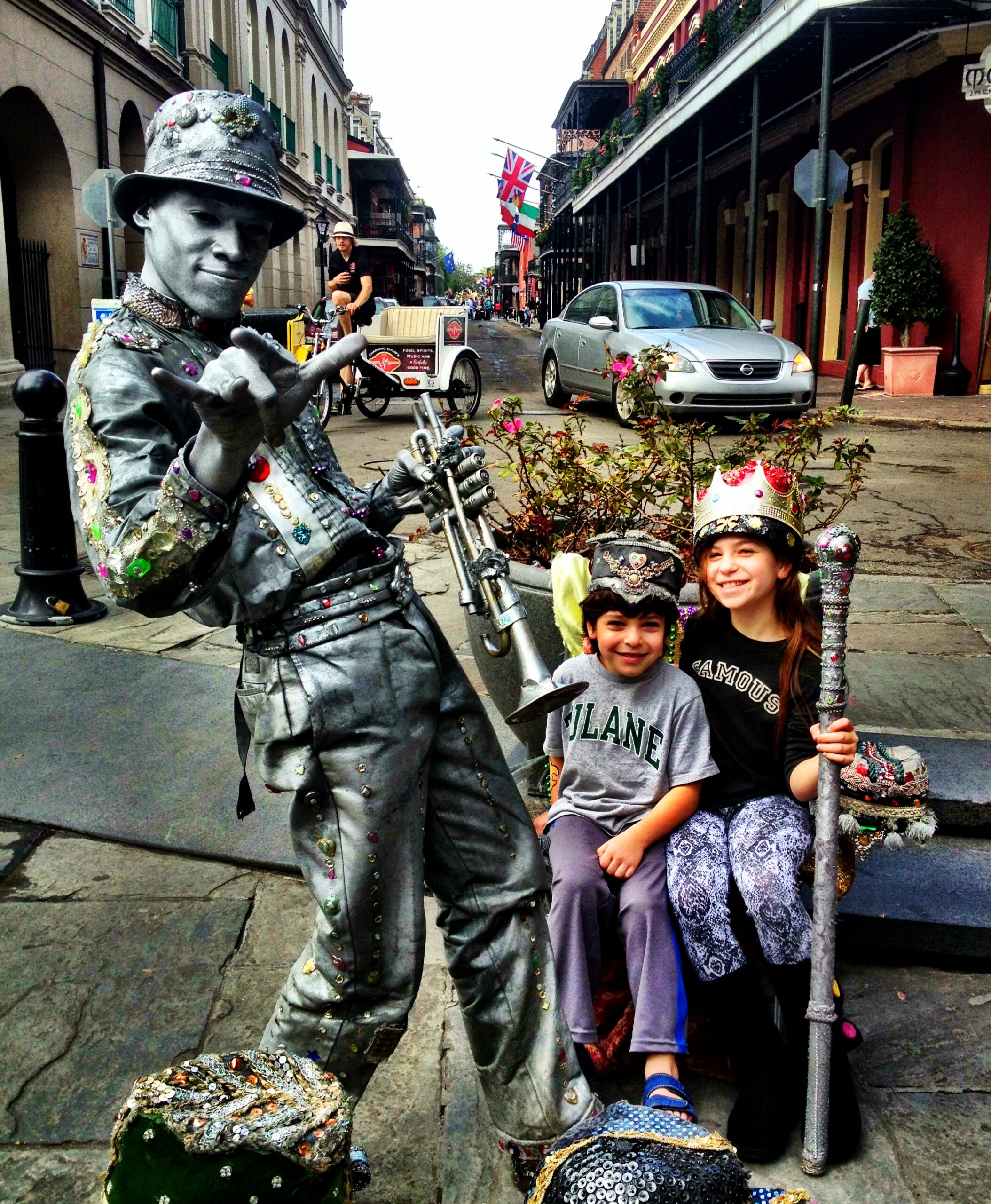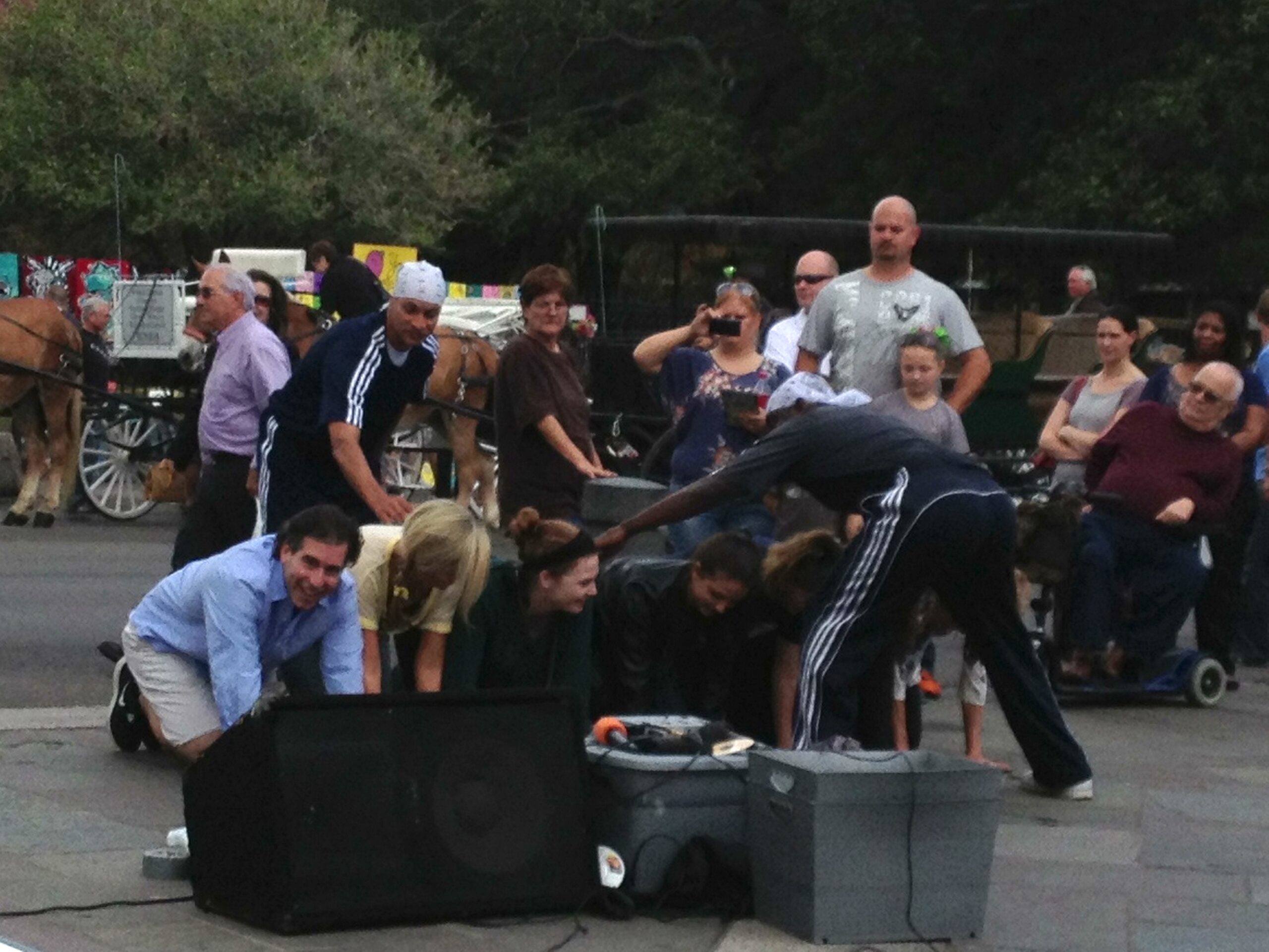
Cafe Du Monde
I will never forget my first time visiting Jackson Square. My eyes lit up as my family and I experienced the magic of the jazzy tunes being played by Miss Doreen’s Dixieland Band, the incredible canvas cityscapes painted by local artist Elaine Cummins, the beautiful architecture of the St. Louis Cathedral, and the energy of the break-dancing street performers. As I stood on the soft grass in the middle of the park and stared in awe at the castle-like cathedral and horse-drawn carriages, I felt like a little kid again arriving at Disney World for the first time. You see, my favorite fairy tales growing up were not Cinderella or Sleeping Beauty, but rather the tales of my parents who met at Jazz Fest in New Orleans through the power of live music––and probably a spiked Sno-ball or two. It became clear to me that day in Jackson Square, as street musicians provided the soundtrack for the mimes and jugglers strolling by on the banks of the Mississippi, that not only is New Orleans just as special as my parents described it to be, but that there is something about music that works to connect us all as humans.
Located in the city where Jazz was created, the music in Jackson Square propels visitors through the park as they parade past face painters and tarot card readers around each beautifully-manicured block-long edge and 90-degree-angle. From the very moment I arrive and hear the horns playing, I can feel my jaw unclench, my shoulders relax, and a smile grow wide. I don’t just walk past the street vendors lining the fence that punctuates the square, I strut to the beat. In just analyzing the way my body reacts to Jackson Square and its phenomenal performers, It is clear to me that music “helps provide a comfortable level of activation and a positive mood.” As a Johns Hopkins study of dozens of Jazz performers’ brains explains, “listening to music can reduce anxiety, blood pressure, and pain as well as improve sleep quality, mood, mental alertness, and memory.” Walking around, it is visible on the smiling faces of everyone there, including myself, that the music being played is positively affecting us. In addition to saxophones and trumpets, one can hear the joyous sounds of laughter from people of all ages and from all different places. Science all but confirms the way that music works to unite strangers as a universal language. “Music has such a strong grip on listeners—regardless of differences in education, personality, musical taste, or culture.” This is because humans are hard-wired to respond to music from inside the womb and for the rest of our lives. As Rich Coffey Music explains, infants respond better to consonant intervals and smooth notes than they do to random and unpleasant note combinations. They even found that “the cries of babies just a few weeks old were found to contain some of the basic intervals common to Western music.” The beat of the mother’s heart we hear at the very start of our innocent lives creates an innate connection between humans and music. This connection to music is part of why Jackson Square is so special to everyone who visits. While I have an overt, nostalgic connection to Jackson Square, in hearing the live performances from bands such as the Jackson Square Allstars, everyone who visits, as human beings, is also experiencing a nostalgic connection to this musical location initiated from within the womb.

Human statue performer
The strength of this connection not only bonds Jackson Square visitors to the music and the essence of this historic location, but it gives visitors a sense of community. Groups of people from all different walks of life are able to come together to enjoy music and Jazz-y tunes. Especially in being a location that receives over two million tourists a year, I love to take in the diversity of the people surrounding me. We are complete strangers, but I feel as though we are all connected as we sway to the music and huddle around the same living statue performer in awe––and according to science I am probably not alone in feeling this way. Through studying musical reactivity (how much one is affected by listening to music), researchers Chris Loerch and Nathan Arbuckle found that music “is tied to group processes, positive associations with ingroup members, bias toward outgroup members, and responses to group threat in various populations” through the brain’s release of endorphins and dopamine. Furthermore, the rhythm in music causes our brains to sync up and our bodies to coordinate movements, which both work to increase a sense of community and prosocial behavior as we listen to music. Interacting with both the performers and each other, I have personally never experienced an unfriendly encounter at Jackson Square. From a “Wow you are incredible!” to the performer or just an “Isn’t this amazing?” from the middle-aged woman standing next to me, everyone was so positive during my visit. This friendly social behavior is also evoked by music. Stanford University’s Scott Wiltermuth and Chip Heath performed a study that explicitly demonstrates this coordination. They found that “those who listened to music and coordinated their movements to the music were able to cooperate better and act more generously toward others when participating in economic games.” With its visitors swaying, clapping, and singing along to the musicians and street performers scattered on every corner, Jackson Square perfectly emulates this research. While a Johns Hopkins otolaryngologist states that, “Music is structural, mathematical and architectural. It’s based on relationships between one note and the next,” it is evident through visiting and observing Jackson Square that music notes are not the only relationships that music creates.
Originally created in 1721 as a place of civil, military, and religious authority under the name Place D’armes, Jackson Square has always been a community hub. As engineer and architect M. Le Blong states, “…The principal buildings, like the great church, the town hall, the Government House or the house of the Governor ordinarily have their principal doorway on the Place D’armes. All this attracts there a large concourse of people.” After the Battle of New Orleans in 1814, the city’s beloved square was renamed in honor of General Andrew Jackson, and redesigned to include iron fences, formal gardens, walkways, and benches for sitting. The square design and central location has always encouraged gatherings, which eventually transformed from congregations after church and on holidays, to what we know and love today, a welcoming place where visitors gather to appreciate Jazz music, local artists, and creole food that encapsulates New Orleans’ history, culture, and upbeat energy.

Break dancing performers with volunteers
I will always remember, during that first trip to Jackson Square, when my family sat on the steps opposite the cathedral to watch a group of break dancers entertaining the crowd. At one point, the performers asked for a few volunteers. Tons of people, surprisingly including my introverted, radiologist father, jumped at the opportunity. Little did they know that in about two confusing, hip-hop-music-filled minutes, one of the dancers would land a front flip over every single one of them. I was fascinated by the way the music and positivity surrounding us moved my dad to break out of his usual stern “self” and join in on the fun. We cheered on my dad and the other volunteers in shock, as they crouched down together in fear prior to the big flip. The music had turned everyone there, all of these strangers, into our own little community. Whether it is gathering around a three-piece jazz ensemble or risking your lives together as part of a dance routine, Jackson Square never fails to unite hundreds of strangers through the power of music.
 NOLAbeings
Multimedia artist Claire Bangser created NOLAbeings as a portrait-based story project that marries...
NOLAbeings
Multimedia artist Claire Bangser created NOLAbeings as a portrait-based story project that marries...
 Data corner: Adobe Suite (create a PDF, social media graphic, presentation, edit a photo and video
Data corner is where you go to work with analytics and top tech skills. It takes on everything from PERL and SQL to Canva and Sprout Social.
Data corner: Adobe Suite (create a PDF, social media graphic, presentation, edit a photo and video
Data corner is where you go to work with analytics and top tech skills. It takes on everything from PERL and SQL to Canva and Sprout Social.
